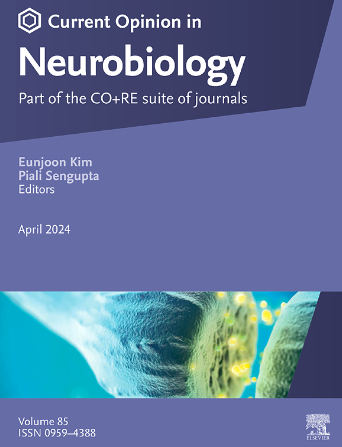防御还是死亡?感觉模态触发先天防御行为的神经机制综述
IF 4.8
2区 医学
Q1 NEUROSCIENCES
引用次数: 0
摘要
当遇到捕食者时,动物面临着一个典型的两难选择。威胁的感官线索提供了捕食者存在的重要信息,推动了一系列防御行为的进化。在啮齿类动物中,这些行为,正如经典的“掠食性迫近连续体”模型所描述的那样,从风险评估和冻结到快速逃离反应。在遭遇前阶段,风险评估和规避反应对于警惕和谨慎地监测环境至关重要。一旦在遭遇后阶段被发现或在循环攻击阶段受到物理攻击,多个感官系统就会迅速激活,触发逃生反应,以增加与威胁的距离。尽管存在物种特异性差异,但支撑这些防御策略的大脑区域,包括丘脑、下丘脑和中脑,在进化上是保守的。这篇综述的目的是提供一个普遍的先天防御电路框架的全面概述,以丰富我们对动物如何应对危及生命的情况的理解。本文章由计算机程序翻译,如有差异,请以英文原文为准。
Defense or death? A review of the neural mechanisms underlying sensory modality-triggered innate defensive behaviors
Defense or death presents a canonical dilemma for animals when encountering predators. Threatening sensory cues provide essential information that signals predator presence, driving the evolution of a spectrum of defensive behaviors. In rodents, these behaviors, as described by the classic “predatory imminence continuum” model, range from risk assessment and freezing to rapid escape responses. During the pre-encounter phase, risk assessment and avoidance responses are crucial for monitoring the environment with vigilance and cautiousness. Once detected during the post-encounter phase or physically attacked during the circa-strike phase, multiple sensory systems are rapidly activated, triggering escape responses to increase the distance from the threat. Although there are species-specific variations, the brain regions underpinning these defensive strategies, including the thalamus, hypothalamus, and midbrain, are evolutionarily conserved. This review aims to provide a comprehensive overview of the universal innate defensive circuit framework to enrich our understanding of how animals respond to life-threatening situations.
求助全文
通过发布文献求助,成功后即可免费获取论文全文。
去求助
来源期刊

Current Opinion in Neurobiology
医学-神经科学
CiteScore
11.10
自引率
1.80%
发文量
130
审稿时长
4-8 weeks
期刊介绍:
Current Opinion in Neurobiology publishes short annotated reviews by leading experts on recent developments in the field of neurobiology. These experts write short reviews describing recent discoveries in this field (in the past 2-5 years), as well as highlighting select individual papers of particular significance.
The journal is thus an important resource allowing researchers and educators to quickly gain an overview and rich understanding of complex and current issues in the field of Neurobiology. The journal takes a unique and valuable approach in focusing each special issue around a topic of scientific and/or societal interest, and then bringing together leading international experts studying that topic, embracing diverse methodologies and perspectives.
Journal Content: The journal consists of 6 issues per year, covering 8 recurring topics every other year in the following categories:
-Neurobiology of Disease-
Neurobiology of Behavior-
Cellular Neuroscience-
Systems Neuroscience-
Developmental Neuroscience-
Neurobiology of Learning and Plasticity-
Molecular Neuroscience-
Computational Neuroscience
 求助内容:
求助内容: 应助结果提醒方式:
应助结果提醒方式:


